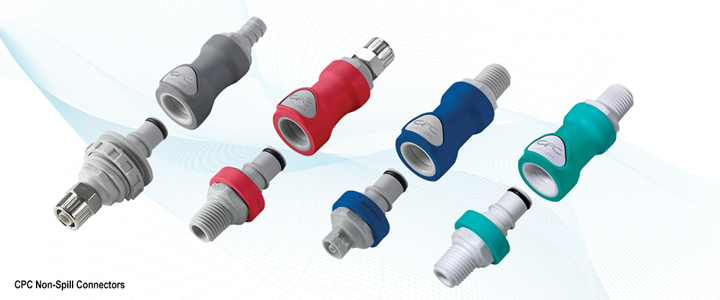Once the domain of high-pressure hydraulics, non-spill performance is now available in quick disconnect solutions for low-pressure fluid handling in countless products and processes.
For some time, low-pressure fluid-handling applications have utilized non-spill quick disconnects originally designed for highpressure environments. However, as more low-pressure uses for non-spill connectors emerged, it became clear that high-pressure couplings were over-engineered — and certainly costly — for connecting flexible, semi-rigid and reinforced tubing in lowpressure applications.
To precisely meet the non-spill requirements of low-pressure fluid applications, a new category of couplings has evolved: low-pressure, smallfootprint thermoplastic and metal quick disconnect couplings that maintain nonspill performance characteristics. The following six traits describe the evolution of the non-spill coupling tailored for low-pressure environments:
1. Maintenance of flush-faced valves
2. Switch from metal to engineered polymers
3. Low-pressure environments, minimal pressure drop
4. Compact design
5. Ease of use
6. Chemical compatibility
The preceding six evolutionary traits explain why and how today’s non-spill couplings have been designed to meet the unique requirements of low-pressure fluid-handling environments. What started as a high-pressure non-spill coupling has expanded beyond the scope of hydraulics to bring non-spill performance to many industries — and very likely, to products of the future taking shape on CAD program screens today.
For more detailed information, please read our white paper, 6 Traits of Non-Spill: How quick disconnect couplings
evolved for low-pressure fluid handling.
If you would like to learn more about CPC’s non-spill connectors OR any of our products, please email us.


